
National Museum of the Holodomor Genocide is a center of commemoration of millions Ukrainians – victims of the genocide of 1932 and 1933.
How to get URL link on X (Twitter) App


 2. Three more incidents have come to light involving the destruction by the occupiers of memorial crosses marking the graves of the Holodomor victims in the Luhansk region. This time the accidents occurred in the Novopskov area, particularly, in Zaaidaryvka, Rohove, and Aidar.
2. Three more incidents have come to light involving the destruction by the occupiers of memorial crosses marking the graves of the Holodomor victims in the Luhansk region. This time the accidents occurred in the Novopskov area, particularly, in Zaaidaryvka, Rohove, and Aidar.

 2. and Stalin’s people would come, take people’s food, and force our parents to join the collective farm. In the first years, a small part of the harvest was kept for planting, but most of it was taken away. Eventually, they took everything.
2. and Stalin’s people would come, take people’s food, and force our parents to join the collective farm. In the first years, a small part of the harvest was kept for planting, but most of it was taken away. Eventually, they took everything.

 9. 📸Фото Марка Залізняка. Розпродаж майна розкуркуленого селянина Мартиненка на "червоному базарі", с. Удачне, Донецька обл.
9. 📸Фото Марка Залізняка. Розпродаж майна розкуркуленого селянина Мартиненка на "червоному базарі", с. Удачне, Донецька обл.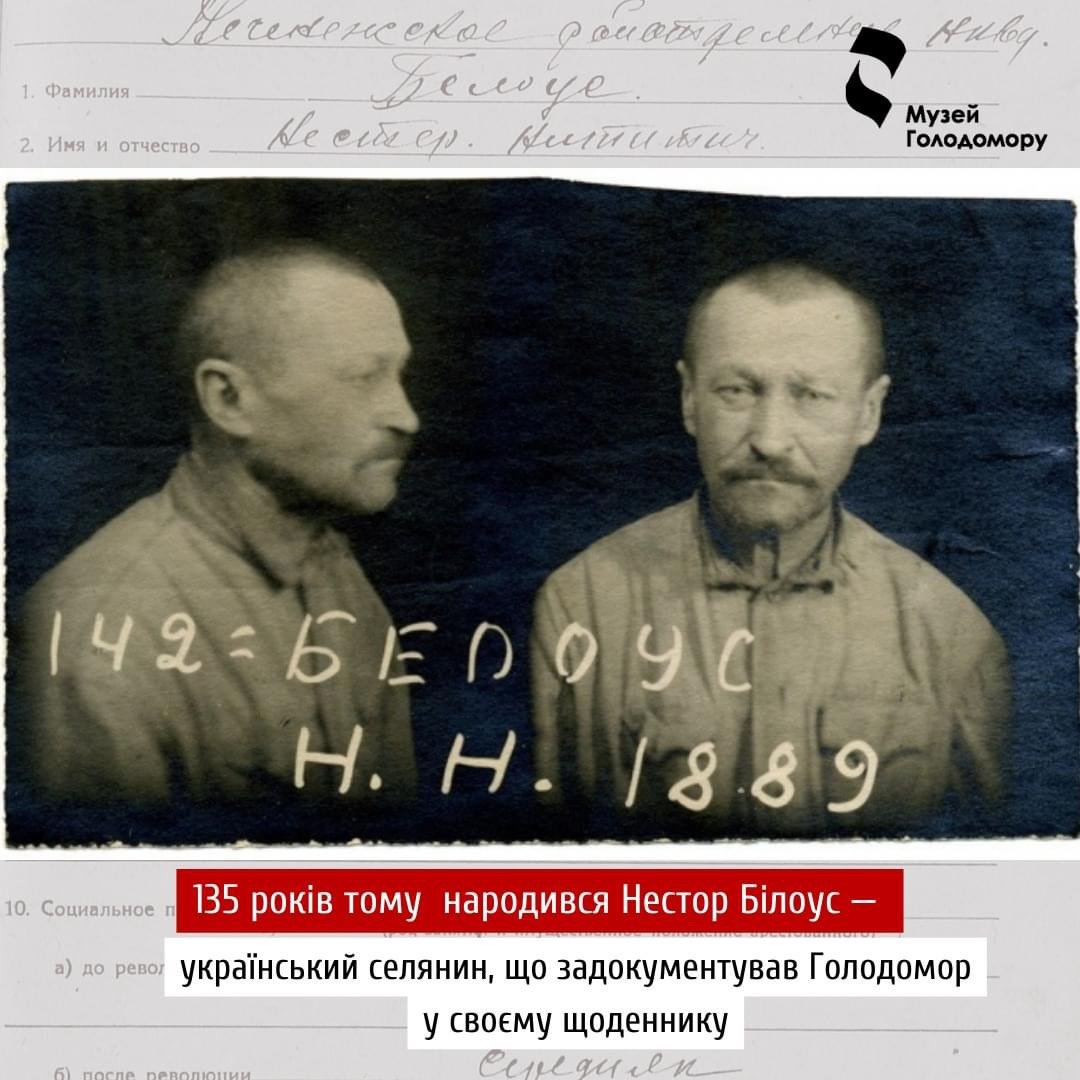

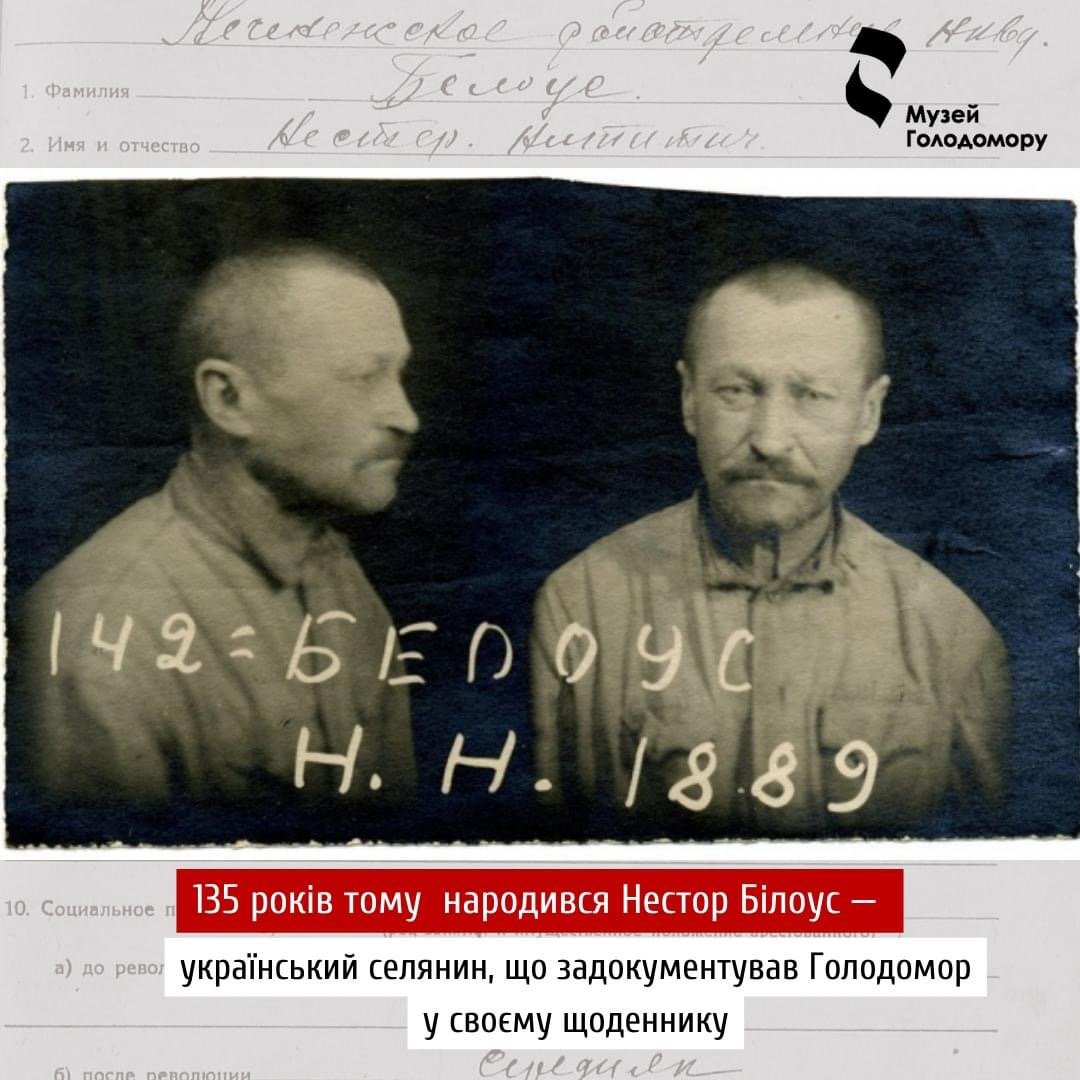
 2. He began keeping a diary in 1911, but his most detailed entries describe the beginning of the Civil War, the mass man-made famine of 1921-1923, and the Holodomor of 1932-1933. Bilous essentially became a chronicler of the Soviet government’s destruction of Ukrainian villages.
2. He began keeping a diary in 1911, but his most detailed entries describe the beginning of the Civil War, the mass man-made famine of 1921-1923, and the Holodomor of 1932-1933. Bilous essentially became a chronicler of the Soviet government’s destruction of Ukrainian villages.

 2. Вести щоденник почав у 1911 році, але найбільш розлого розповідає про початок громадянської війни, а потім — про масовий штучний голод 1921-1923 рр. та про Голодомор 1932 — 1933 рр. Білоус фактично стає літописцем нищення радянською владою українського села.
2. Вести щоденник почав у 1911 році, але найбільш розлого розповідає про початок громадянської війни, а потім — про масовий штучний голод 1921-1923 рр. та про Голодомор 1932 — 1933 рр. Білоус фактично стає літописцем нищення радянською владою українського села.

 2. We were not wealthy, but, for those times,we were not poor either. We were considered well-to-do. They demanded our father join the collective farm: they often came to our house and threatened him.
2. We were not wealthy, but, for those times,we were not poor either. We were considered well-to-do. They demanded our father join the collective farm: they often came to our house and threatened him.

 2. Так з’явилася Постанова «Про охорону майна державних підприємств, колгоспів і кооперації та зміцнення громадської (соціалістичної) власності», яку було ухвалено 7 серпня 1932 року.
2. Так з’явилася Постанова «Про охорону майна державних підприємств, колгоспів і кооперації та зміцнення громадської (соціалістичної) власності», яку було ухвалено 7 серпня 1932 року.

 2. Farmers in southern Ukraine lose dozens of hectares of crops as a result of arson attacks by Russian troops. With the beginning of the harvest, the army of the Russian Federation began to intensively and purposefully shell the fields to burn the harvest.
2. Farmers in southern Ukraine lose dozens of hectares of crops as a result of arson attacks by Russian troops. With the beginning of the harvest, the army of the Russian Federation began to intensively and purposefully shell the fields to burn the harvest.

 2. Oleksandra Petrivna was born in 1927 in the village of Prechyske (during the Holodomor, Kharkiv region, now Chervone village, Kyiv region). Her family suffered during collectivization, and the Holodomor – horses and a cow were taken away.
2. Oleksandra Petrivna was born in 1927 in the village of Prechyske (during the Holodomor, Kharkiv region, now Chervone village, Kyiv region). Her family suffered during collectivization, and the Holodomor – horses and a cow were taken away.

 2. Були ті «Торгсіни» забиті всіляким добротним крамом, а найбільше продуктами харчування: біла мука, різні крупи, пшоно, цукор, сало, м'ясо, різні ковбаси, шинка, масло, консерви.
2. Були ті «Торгсіни» забиті всіляким добротним крамом, а найбільше продуктами харчування: біла мука, різні крупи, пшоно, цукор, сало, м'ясо, різні ковбаси, шинка, масло, консерви.

 Why did young people decide to tackle such a complex topic, over which the veil of mystery was only raised? The answer lies in the history of their family, in which several generations of artists grew up.
Why did young people decide to tackle such a complex topic, over which the veil of mystery was only raised? The answer lies in the history of their family, in which several generations of artists grew up.

 Чому молоді люди вирішили взятися за таку складну тему, над якою лише припідняли завісу таємничості? Відповідь – в історії їхньої родини, в якій виросло кілька поколінь митців.
Чому молоді люди вирішили взятися за таку складну тему, над якою лише припідняли завісу таємничості? Відповідь – в історії їхньої родини, в якій виросло кілька поколінь митців.
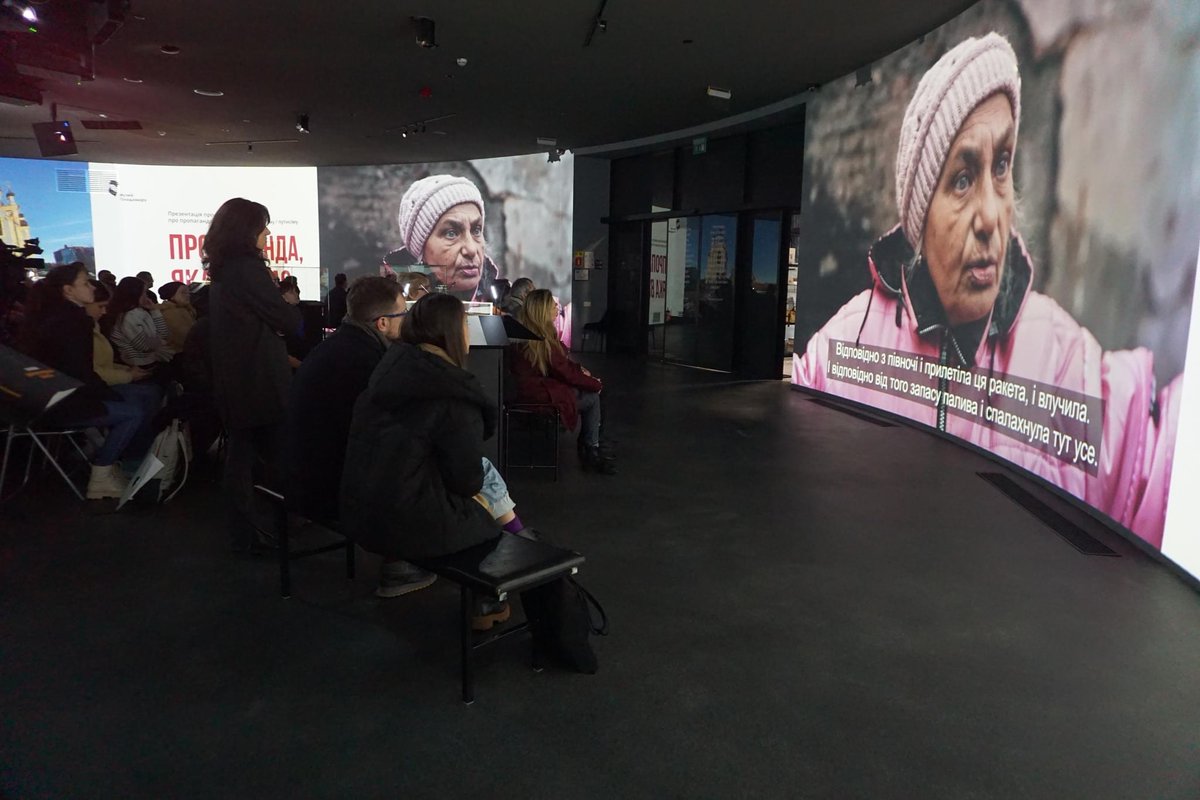



 It was filmed by order of the National Institute of Cultural Heritage of Poland within the framework of the Center for Cultural Support in Ukraine.
It was filmed by order of the National Institute of Cultural Heritage of Poland within the framework of the Center for Cultural Support in Ukraine.
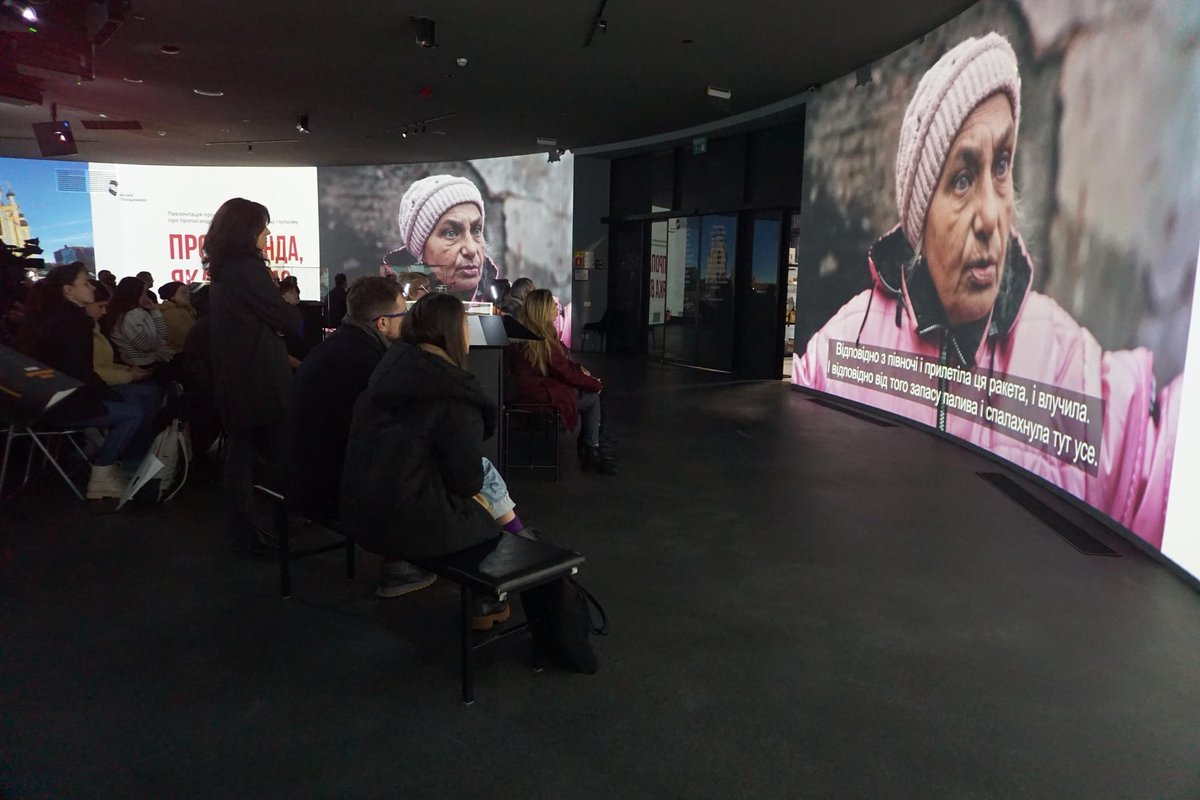



 Також у рамка заходу відбулася презентація проєкту Музею Голодомору «Пропаганда, яка вбиває». Представляючи обидва проєкти, в. о. Генерального директора Леся Гасиджак зазначила:
Також у рамка заходу відбулася презентація проєкту Музею Голодомору «Пропаганда, яка вбиває». Представляючи обидва проєкти, в. о. Генерального директора Леся Гасиджак зазначила:
 But this is exactly how the Russian "Wikipedia" writes about our Hryhorii Savych. But no matter how the Russians try to appropriate Skovoroda for themselves, nothing comes of it.
But this is exactly how the Russian "Wikipedia" writes about our Hryhorii Savych. But no matter how the Russians try to appropriate Skovoroda for themselves, nothing comes of it.

 Національний музей Голодомору-геноциду запрошує на презентацію та показ документального фільму «Стерти націю» (реж. Томаш Ґживачевський, Польща). У межах заходу також відбудеться презентація проєкту «Пропаганда, яка вбиває», створеного Національним музеєм Голодомору-геноциду.
Національний музей Голодомору-геноциду запрошує на презентацію та показ документального фільму «Стерти націю» (реж. Томаш Ґживачевський, Польща). У межах заходу також відбудеться презентація проєкту «Пропаганда, яка вбиває», створеного Національним музеєм Голодомору-геноциду.

 Все розпочалось з коментаря в Інстаграм на сторінці у krapka.krapka
Все розпочалось з коментаря в Інстаграм на сторінці у krapka.krapka
 It all started with a comment on Instagram on the krapka.krapka. One of Tetiana’s readers reacted to the photo of the blogger’s necklace, noting that there are so few family heirlooms in Ukrainian families because people had to exchange them for food in 1933 and 1947.
It all started with a comment on Instagram on the krapka.krapka. One of Tetiana’s readers reacted to the photo of the blogger’s necklace, noting that there are so few family heirlooms in Ukrainian families because people had to exchange them for food in 1933 and 1947.
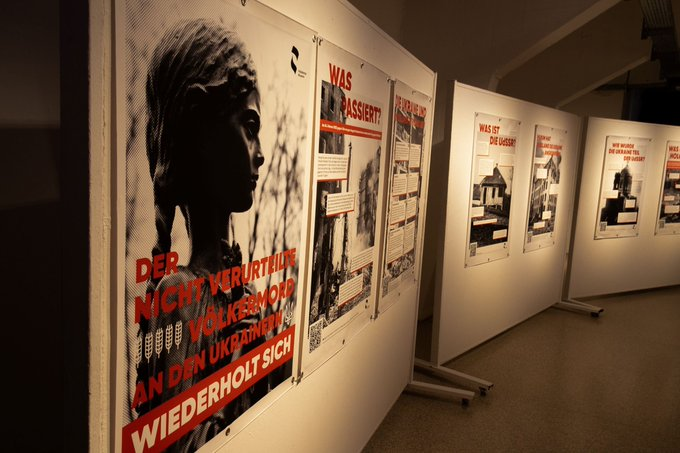



 В рамках цього проєкту експонується виставка Музею Голодомору «Незасуджений геноцид українців повторюється», виставка колажу від проєкту Cutout Collage Festival & Studio «Паралелі» та інсталяція «Обід, приготовлений росією» підготовлена нашим музеєм.
В рамках цього проєкту експонується виставка Музею Голодомору «Незасуджений геноцид українців повторюється», виставка колажу від проєкту Cutout Collage Festival & Studio «Паралелі» та інсталяція «Обід, приготовлений росією» підготовлена нашим музеєм.